Site menu:
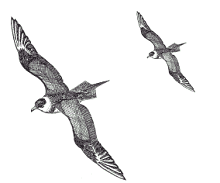
September 2019 Newsletter
Arctic and Great Skuas.
Colour Ring Report.
August Bird News.
Forthcoming Events.
Latest Newsletter.
Arctic and Great Skuas
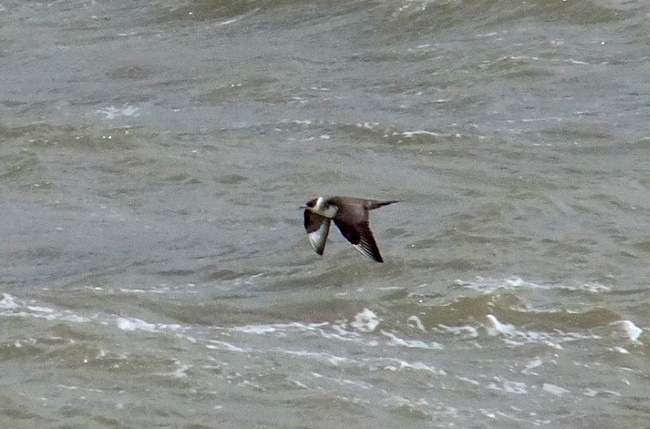
September is definitely the peak month for
skuas, at least it is if we get the hoped for gales! This month I'm
writing about our two commoner species, Arctic and Great Skuas, and
sometime in the next month or two I plan to write about the two
rarities - Long-tailed and Pomarine Skuas.
Arctic Skuas
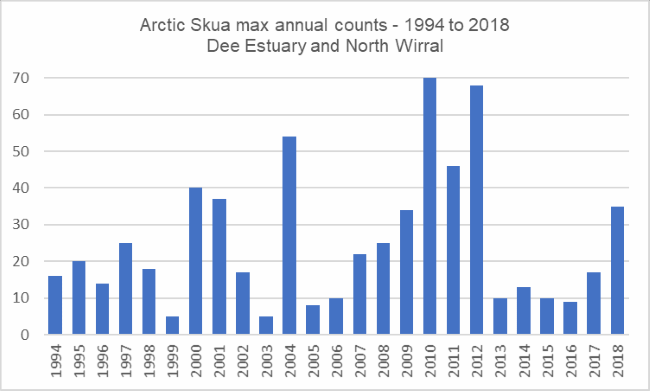
Arctic Skuas breed right across the northern hemisphere in the Arctic and further south in areas such as the Baltic. Scotland is it's most southerly breeding area and in our era of global warming it is no great surprise to see that it is in trouble here and is red-listed due to both declines in breeding area and breeding pairs. The precise reasons for the decline appear to be the shortage of sand eels and therefore the species which catch them, which the skuas steal from, and also predation of Arctic Skuas by Great Skuas. Currently the RSPB give a very precise figure of 2,136 breeding pairs, down from 3,350 pairs in the late 1980s.
Arctic Skuas migrate close to the coast harassing
terns and gulls as
they go. They winter all the way down to South Africa and South America
although winter records in Liverpool Bay are not unknown, including
single birds
off north Wirral recorded in early December in both 1999 and
2011.
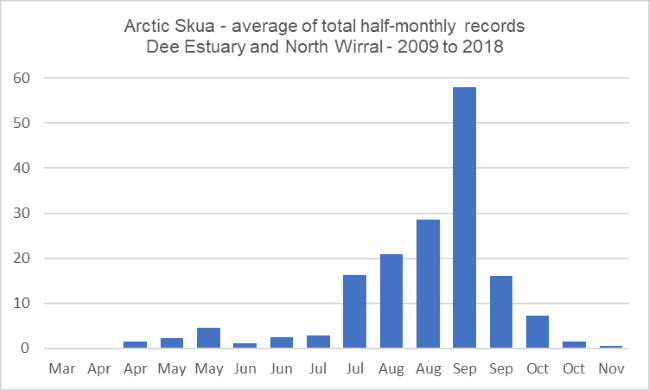
British breeding birds are on territory by late April so the May peak which we see during the spring passage must be of birds breeding further north, perhaps Iceland or northern Scandinavia. We do sometimes see them in June, for example there were nine June records both in 2011 and 2012 and these are presumably non-breeding immature birds; there are plenty of those as they don't breed until four years old. By late July the return migration is well underway. According to the graph numbers peak in the first half of September, but that doesn't tell the whole story. I suspect the main passage is actually in August but some very high counts during gales in September skew the data somewhat. So in 2010 a count of 70 was made from Hoylake on September 14th and on the same date in 2012 there were 68, so just one day's count each year formed the bulk of records for that month. It should be remembered that in gale conditions that these counts are just estimates, off our shores birds are usually moving east to west but there is no way of knowing whether some are circling back further out before flying past again. Going back to the argument the main passage being in August, 2018 was an interesting year with 85 recorded in the second half of August, the highest count for that period in the past 10 years, whereas in the first half of September none were seen at all, the lowest count in ten years.
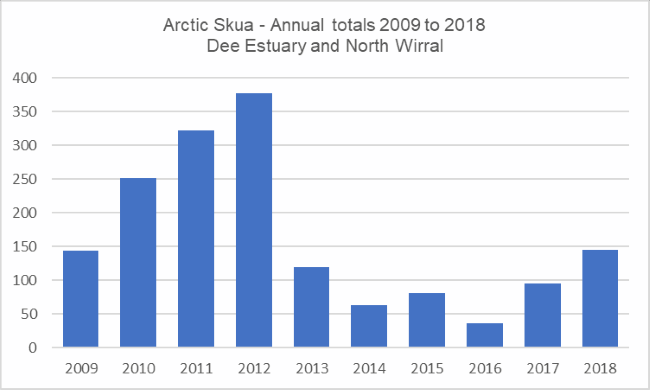
Sightings of Arctic Skuas from our shores are usually of ones and twos and somewhat distant as they chase gulls and terns out in Liverpool Bay, but sometimes we get more interesting views. Except for the odd wind blown bird during gales I think it safe to say we never get birds further into the estuary south of a line between West Kirby and Mostyn so on 27th July 2011 Steve Hinde was astonished to see six Arctic Skuas sat on a sand bank, in calm weather, just off Heswall. Later that same year, on September 8th during a breezy morning, I was sea-watching by Leasowe Lighthouse hoping for a Leach's Petrel when I saw an Arctic Skua fly over the horizon towards me, then another, and another. It was a flock of 17! Now there are lots of daily totals far greater than 17 but they usually pass through in singles or small groups, flocks of 17 or more off North Wirral are virtually unheard of so I was indeed lucky to see them.
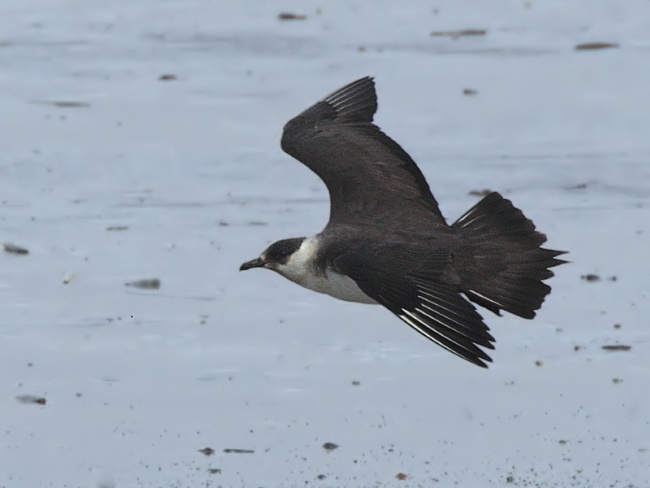
A word about the
Arctic Skua bar charts: as I was compiling the records it soon became
apparent that the same birds were being seen and counted along the
various north Wirral sites, and in particular most birds off Hilbre and
Hoylake were being double counted. Typical daily totals during a gale
would be, say, 35 at Hilbre and 32 at Hoylake, with smaller numbers at
Leasowe and New Brighton. To avoid this double counting I took the
decision to just use whatever the maximum count was on any particular
day (35 in the above example), and in the majority of cases this would
be either the count at Hoylake or Hilbre. This will probably have
slightly underestimated the numbers but the alternative would have been
to add up all the counts leading to a large over estimate.
Great Skuas

Great Skuas are much rarer
than Arctics both
globally and locally. 60% of all Great Skuas breed in Scotland and the
total world population is only 16,000 pairs. With some colonies
decreasing and others increasing it is difficult to assess it's status
but the population appears to be stable, perhaps with a small decrease
due to food shortages. Most spend the winter north of the equator and
thus
November and December records here are more numerous than for the
Arctic Skua, although there has only been one January record and none
for February or
March over the past 10 years.
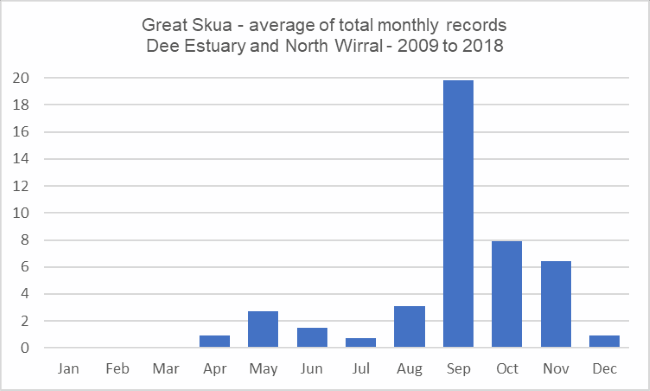
Away from their breeding grounds they tend to stay
out of sight of land usually only being seen from the coast during
gales. One or two are often seen on bird-watching boat trips in the
summer out into Liverpool Bay which come to 'chum', hence Richard
Steel's excellent photos.
Adults will be on their breeding territories by the
end of April so the sightings we get in May through to July will be
non-breeding immature birds, most don't start breeding until at least
seven years old. The adult birds leave the breeding areas at the end of
August, and we see a distinct passage in September. The weather pays a
large part in how many we see and maximum numbers always occur during
on shore gales.
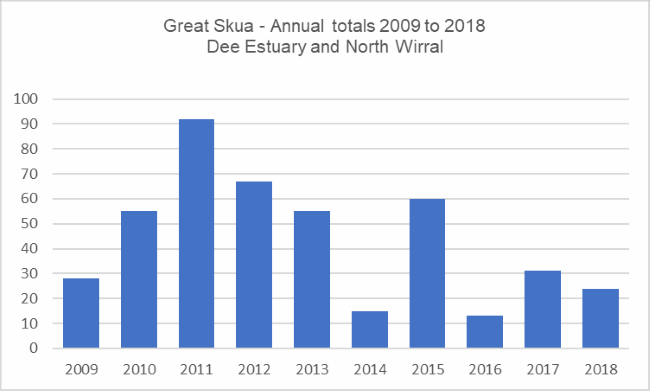
But each year is different. In 2011, for example, we
only had 21 records in September but gales in early October brought
double figure counts on the 6th and 7th resulting in the highest
October count for the past ten years of 40. 2012 was perhaps more
typical with an excellent 62 September records due to several gales
through the month, yet there was only a total of five records for all
the other months put together. Sometimes the best views are had the day
after a gale when they can be seen eating wrecked birds on the sand
banks and, as Jane Turner put it, they can get so fat they can barely
fly. September 2013 was interesting as a single bird hung around the
mouth of the Dee estuary for several days including some really close
views at Little Eye, and one day if flew down to Heswall
then came within a few feet of me standing on the beach at Thurstaston
on its way back towards Hilbre. In 2015 very few were seen until
November when a group of up to nine hung around Hoylake and Hilbre for
several days. On 14th November that year there was a High Tide
Birdwatch at Hoylake
with 8,000 gulls and many waders on the beach, these all rose up in one
big spectacular mass as one of the Great Skuas flew right over them!

2019 Update
Arctic Skua
- the second half of August was
particularly good with 85 records, equaling the count for 2018 and
three times the average for the past 10 years.
Great Skua - Six records so far this year with one in April and five in the second half of August.

References:
1. Cheshire and Wirral Bird Reports from 1994 to 2017, Cheshire and Wirral Ornithological Society - http://www.cawos.org/ .
2. Arctic and Great Skua records from Cheshire and Wirral Ornithological Society database.
3. Arctic and Great Skua records in the Dee Estuary
latest sightings page (and all who contributed records) - www.deeestuary.co.uk/lsight.htm.
4. BTO Bird Atlas 2007-11, 2013.
5. BTO Migration Atlas, Poyser, 2002.
6. Birds of the Western Palearctic (BWPi - interactive edition).
Top of Page
Colour Ring Report
Lots of colour ringed birds seen this month, including a long distance Sandwich Tern, the return of a vagrant Knot and our first colour-ringed Lapwing.
Sandwich Tern
Scanning through the mixed flock of gulls, waders
and terns at
Hoylake
on August 1st Steve Hinde spotted a red ring on a Sandwich Tern with
the letters KNB. Although it was ringed fairly close to the Hoylake -
at Ynyslas NNR, Borth in mid-Wales on September 19th 2016 - it turned
out that the previous record of this bird was close to Cape Town in
South
Africa on October 21st 2018. This is a massive 6,165 miles away as the
crow flies (longer for a Sandwich Tern flying around the coast!). The
previous furthest distance of a bird seen by us was 2,300 miles to
Alert in northern Canada - we've seen three knots and a turnstone
which were ringed there.
This Sandwich Tern had also been spotted at Rhos
Point, Colwyn Bay, on July 24th 2018, by North Wales regulars Marc
Hughes, Rob Sandham and Henry Cook, three months before being seen at
Cape Town.
Most Sandwich Terns are ringed as chicks at breeding colonies, so it is
interesting that Ynyslas is different as it is an important
staging post for this species (like the Dee Estuary). Tony Cross, the
ringer, said "The
colour-ringing is part of a project aiming to study the origins and
destinations of Sandwich Terns using this important (RAMSAR designated)
migration stop-over site on the West Wales coast. So far about 150 have
been individually colour-ringed with many sighting reported around
Britain and Ireland as well as movements recorded to or from France,
the Netherlands, Germany, Namibia and South Africa."
Knot
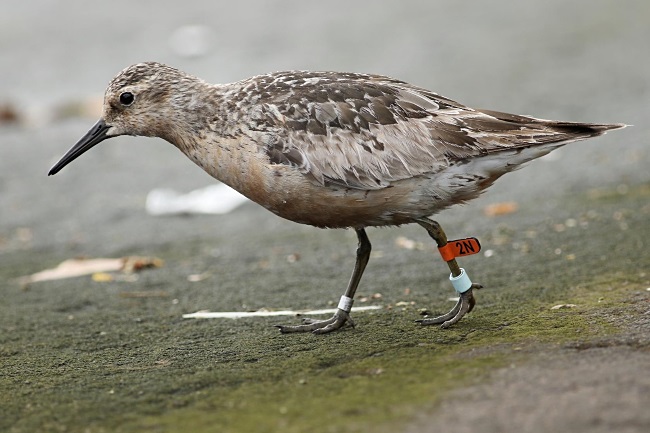
Orange flag (2N) over P
- ringed at Altcar on September 22nd 2017.
Regular
readers of this Colour Ring Report may remember that in the October
2018 Newsletter I reported the presence of this knot in the Azores,
first recorded on the islands on September 9th and last seen on October
15th 2018. Knot are rare on the Azores and those of the Islandica race
virtually unknown and this was the first one seen there with a BTO
ring. This bird didn't seem to be doing particularly well and seemed to
have difficulty finding food so most of us didn't think it would
survive.
But Knot are robust birds and well used to traveling long distances
over the sea and, much to our amazement, it was spotted among the knot
flock at Formby Point on August 13th - presumably having found it's way
back to northern Canada and back. As Jim Wilson put it "Nice that 2N is
back. There must be very few ringing records in any species showing
what finally happens to vagrants."
In the winter of 2017/18 we saw Oflag 2N at
Thurstaston and West Kirby six times in total, it would be great to see
it again this coming winter.
Lapwing
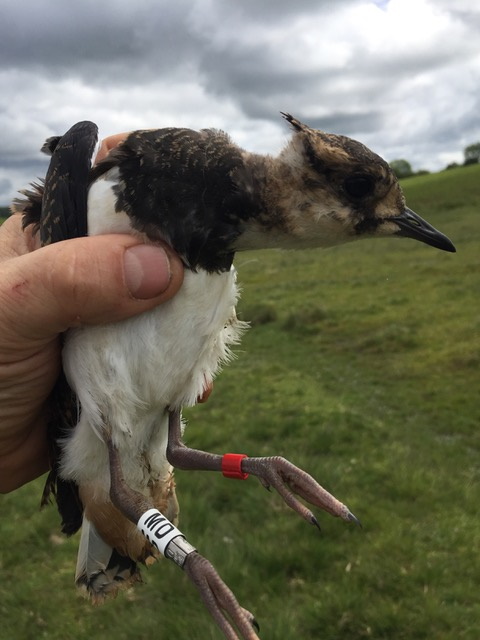
R-W(MO) Ringed as a chick on June 20th 2019.
Recorded at Burton Mere Wetlands on August 8th 2019.
This bird was ringed by Tony Cross, secretary of the Mid Wales Ringing Group.
Tony's feedback to the finder, Colin Schofield, was: "great to hear this. The bird is one of only 3 Lapwing chicks I colour-ringed on a site near my home in mid-Wales (actually at Meillienydd Common near Llanbister Road) on 20th June 2019".
This is the first colour-ringed Lapwing in our data base.
Black-tailed Godwits
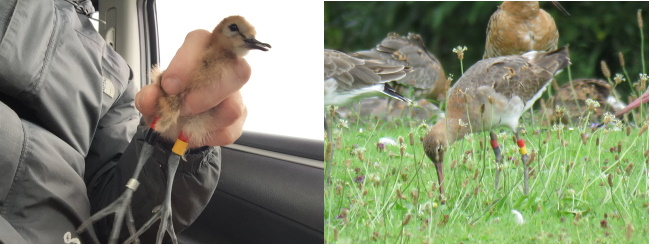
Through August there were large numbers of
Black-tailed Godwits at the Caldy Wildfowl Collection site and we
logged 25 colour ringed birds - 14 of these were ringed in Iceland, two
in north-east Scotland, three on the Humber estuary, two in south-east
England, one in France and three in Portugal. It was noticeable that in
the latter half of July and the first week in August that there was
quite a turnover of birds as they arrived from Iceland and moved on.
But for the rest of August we were seeing the same birds day after day
presumably as they stayed put whilst in heavy moult.
RY-RN (see photo) was ringed in June 2016 at
Selfoss, southern Iceland, by Boddi who is our contact for all ringed
Icelandic ringed Black-tailed Godwits, Oystercatchers and Ringed
Plovers. The bird arrived at Caldy in July this year having only been
seen just once since being ringed, at Llanelli in south Wales in May
2018.
Colour-ringed birds were recorded by Richard Smith, Steve Hinde, Colin
Schofield,
Dave Winnard, Allan Conlin, Richard Whitby and Ken McNiffe on
the Dee estuary. Peter Knight and Rose Maciewicz spotted Knot 2N at
Formby.
August Bird News
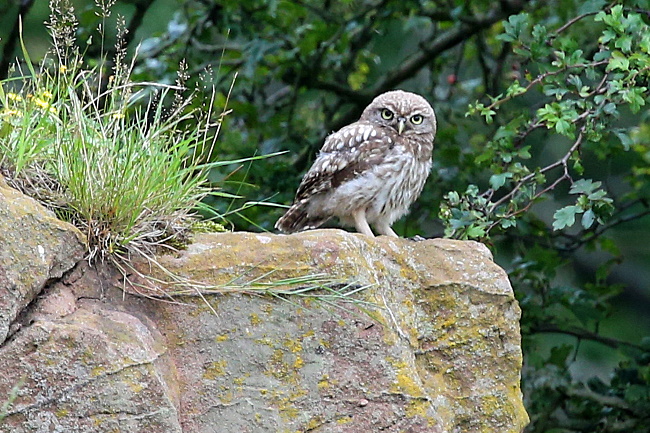
Judging by the number of reports and photographs I received it seems
Burton Point was very much the site of the month. A family of Little
Owls were giving great views and there were also Yellow Wagtails,
Wheatears and Whinchats along with sightings of Marsh Harriers,
Short-eared Owls, Hen Harriers and Great Egrets over the adjacent marsh.
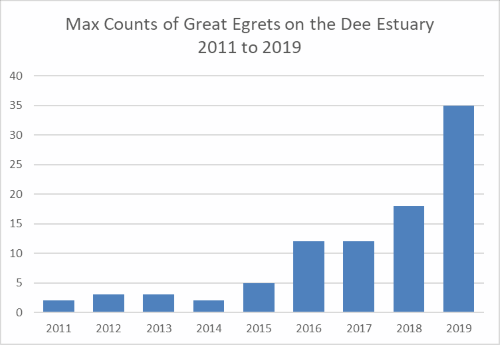
Talking of Great Egrets we had record numbers
counted coming into the roost at Burton with minimum count of 35 on the
2nd and 33 on the 3rd, almost double the 2018 max of 18. 11 of these
Great Egrets were at the Connah's Quay reserve at the end of the month.
Spoonbills
were also in good numbers with up to nine at Parkgate for most of the
month. Also at Parkgate were plenty of Greenshanks on passage with a
max of 25, with 15 at Burton Mere Wetlands.
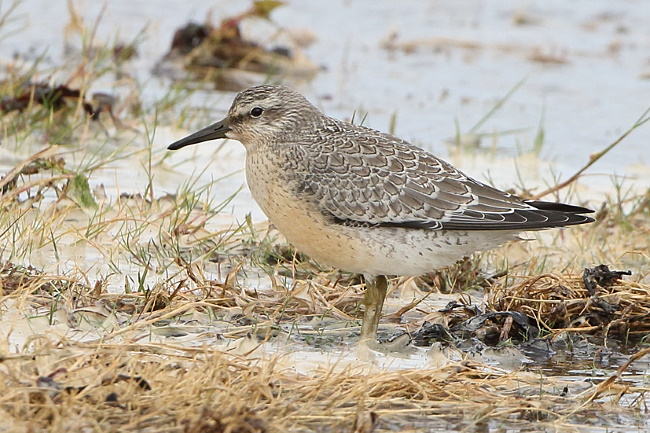
There were plenty of waders around including the
first Curlew Sandpipers of the return passage which arrived on the 28th
at Hoylake. These were all juveniles and there have been plenty of
other juvenile waders indicating a good breeding season. There were
ridiculous numbers of Black-tailed Godwits at the Caldy Wildfowl
Collection with a max 6,140 on the 23rd. This is 10% of the Icelandic
race and there can't be many sites in the country with these sort of
numbers in August, and this is just one small field. As I said to the
owners, we know from the colour rings that many of these godwits have
visited some of the most famous bird reserves in the country such as
Leighton Moss, Titchwell, Cley, Snettisham and Minsmere, but I bet they
don't have as many as you have!
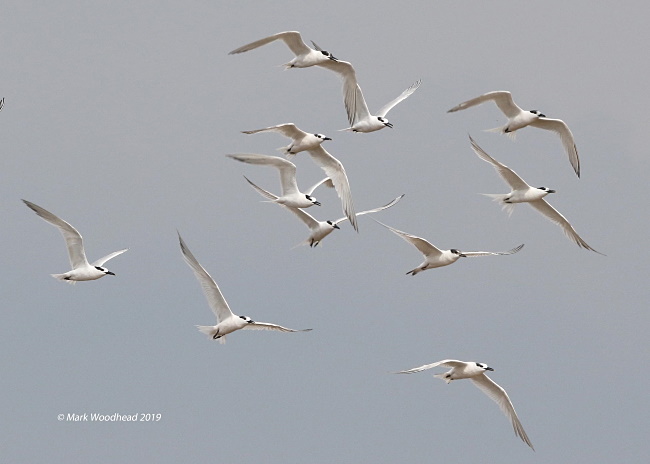
Fresh west winds brought some good sea-watching including four Pomarine Skuas and a Long-tailed Skua as well as Arctic and Great Skuas mentioned in the above article. On the 15th three Storm Petrels were in the Mersey mouth and over 100 Manx Shearwaters were off north Wirral two days later. A rare Black Guillemot was spotted from Hilbre on the 28th and 30th.
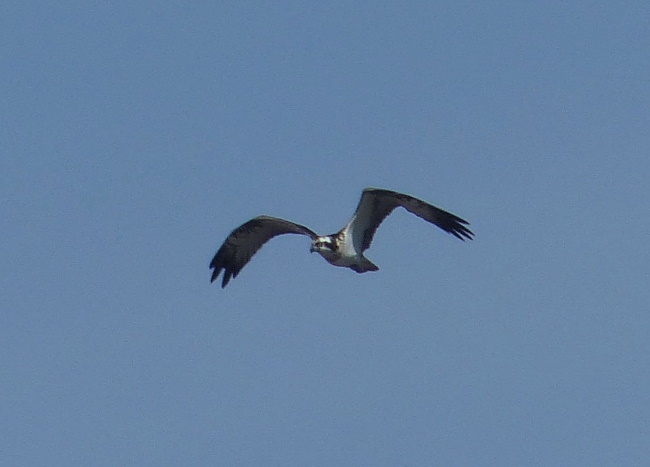
http://hilbrebirdobs.blogspot.com
Top of Page
What to expect in September
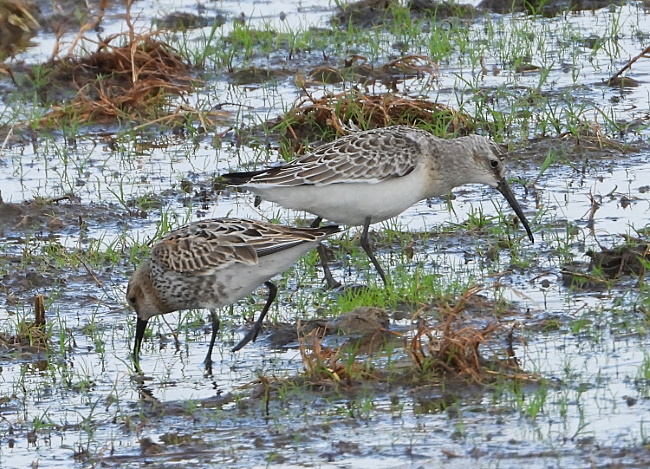
It is also a very good month for waders and the species to look out for
in particular is Curlew Sandpiper. We get juveniles coming through,
they are usually seen first in good numbers at Hoylake then other
similar coastal sites in the first half of September, then there is
often a second wave a week or two later when good numbers are often
seen at Burton Mere Wetlands. We know Knots have had an outstanding
breeding season in Canada so lets hope Curlew Sandpipers have in
Siberia. We should also see juvenile Ruff and Little Stints coming
through.
On the marshes the first returning Pink-footed Geese will arrive, and
some years we can get good numbers of both Short-eared Owls and Hen
Harriers. Also the first Brent Geese will arrive around Hilbre.
Top of Page
Forthcoming Events
Semptember Highest Spring Tides (Liverpool)
Also see Tides page.
1st September, 13.19hrs (BST), 9.9m.
2nd September, 14.03hrs (BST), 9.8m.
28th September, 11.30hrs (BST), 9.7m.
29th September, 12.15hrs (BST), 10.0m.
30th September, 12.57hrs (BST), 10.1m.
Forthcoming Events
Organised by the Wirral Ranger Service , Flintshire Countryside Service and the RSPB (Dee Estuary): All these events and walks have bird interest, even those not advertised specifically for birdwatching. No need to book for these events unless specified - please check below.
10am-5pm
Price: Free entry to reserve, charges apply for some family activities and refreshments.
In celebration of the RSPB Dee Estuary reserve's 40th anniversary, we're delighted to host the 2019 Wirral Wader Festival at Burton Mere Wetlands. As well as a celebration of the internationally important wading bird flocks that make their home on the peninsula's coastline in autumn and winter, it offers a chance to admire and learn more about the populations of breeding wading birds like avocets and lapwings that the reserve is so important for. Stalls and activities from the event's partner organisations Cheshire Wildlife Trust, Wader Quest and Dee Estuary Voluntary Wardens amongst others will be present, and we're offering free entry to everybody to enjoy this special occasion. Much of the event will take place in a marquee from local suppliers Muddy Boots, but hopefully the weather will allow plenty of time outdoors exploring the reserve.
Telephone: 0151 353 2720.
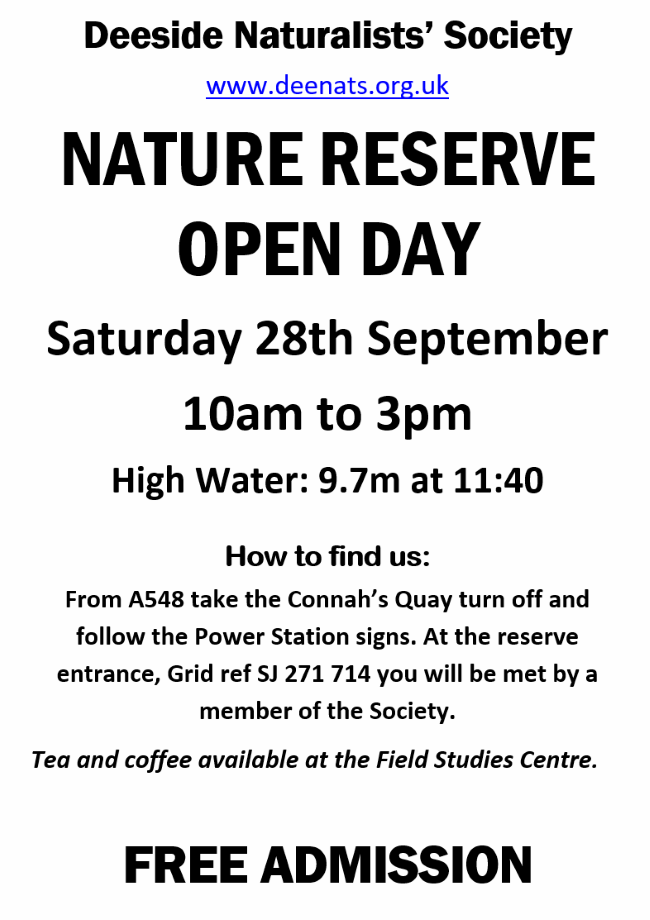
Sunday 29th
September and Monday 30th September RSPB High Tide Birdwatch at Parkgate.
10.30am-2.30pm
In celebration of the RSPB Dee Estuary reserve's 40th anniversary, join
us at Parkgate Old Baths for the awe-inspiring spectacle of a high tide
flooding the vast saltmarsh, potentially reaching the old sea wall. The
marsh at Parkgate is one of the best wetland habitats in the northwest,
and when flooded by an incoming tide, the wildlife which lives here is
pushed closer, with chance of seeing the great range of ducks, geese,
wading birds and egrets in big numbers as they are driven upstream by
the rising tide. A range of birds of prey take advantage of mice and
voles flushed from the grasses; hen and marsh harriers, peregrines and
merlins all spend the winter months on the estuary and this is one of
the best places to watch them, plus short-eared owls if we're really
lucky. So why not venture out to try witness all the drama. Low
pressure and a westerly wind will help push the tide and wildlife in
close. There is free public parking at the Old Baths car park (CH64
6RN) at the north end of The Parade, and the Wirral Country Park car
park on Station Road (CH64 6QJ). There are public toilets at Mostyn
Square in the middle of The Parade, and a number of pubs and cafes.
High tide times: Sunday 29 at 12.15pm; Monday 30 at 12.57pm.
Telephone 0151 353 2720 for further information.
Wednesday 2nd
October, RSPB Point of Ayr
Tidewatch
1pm-3.30pm (approx. finish)
Price: £5 per person (£4 RSPB members) plus Eventbrite booking fee
Booking essential
By October we'll have welcomed many of our winter visitors back to the
mudflats and saltmarsh that make the Dee Estuary such an important home
for wetlands birds, and witnessing a high tide at the Point of Ayr is a
spectacle not to be missed.
Thousands of godwits, redshanks, oystercatchers and curlews gather in
spectacular fashion on the saltmarsh and shingle here at high tide,
which is what we hope to show you if you join us on this gentle walk
from Talacre to our hide. There'll also be a variety of ducks -
pintail, shelduck, teal and mallard - pushed close on the incoming
tide, and there's always the chance that something unexpected will show
its face! Peregrine and merlin are the two raptors most likely to take
advantage of this high tide buffet, so there's a chance of seeing these
hunting at close range.
Park in one of the public car parks signposted from Station Road and
meet outside 'The Point' bar at the end of Station Road. Car parks are
Pay & Display so don't forget some coins. Appropriate clothing and
footwear are essential. The path is fully accessible, but an A-frame
motorcycle gate at the beginning of the walk may make it difficult for
larger wheelchairs. Feel free to pack some snacks or lunch for in the
hide, and a hot flask is recommended at this time of year! Public
toilets and places to purchase refreshments will be available in
Talacre before and afterwards.
Telephone 0151 353 2720 for further information.
Advanced booking and payment is
essential via Eventbrite:
https://poa-october-tidewatch.eventbrite.co.uk
Sunday 13th October
RSPB Raptorwatch at Parkgate.
1pm-dusk
Join us for a chance to see up to seven different birds of prey
including peregrine and merlin, plus two types of owl that all make
their home on the RSPB Dee Estuary nature reserve. With its panoramic
views of the saltmarsh, Parkgate is one of the best places to watch for
the birds hunting. Stick around until dusk for a chance to see the
graceful and endangered hen harriers flying into roost for the night on
the marsh close to the Old Baths car park, plus a ghostly barn owl
emerging to hunt. No booking required, come along any time between 1pm
and sunset. Dress appropriately for the weather and don't forget your
binoculars! Public toilets and various pubs and cafes are situated
close by along Parkgate promenade.
Telephone 0151 353 2720 for further information.